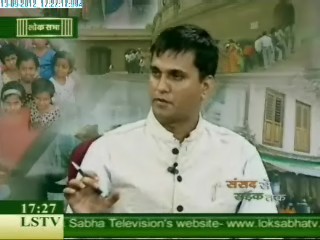
 |
Crowd pullers
- By Kumar Anshuman
Wed Oct 31 18:21:15 GMT 2012
Tuesday, October 16: Maruti launches the Alto 800, a revamped version of the all-time best-seller. Tata Motors introduces a face-lifted Manza sedan.
Wednesday, October 17: A day of the SUVs. Tata Motors launches the Safari Storme and Mahindra introduces the Ssangyong Rexton in India.
Thursday, October 18: Honda launches the automatic version of its compact Brio.
No, the Auto Expo has not started ahead of schedule. The back-to-back launches are an attempt by the carmakers to cash in on the shopping spree in the festive season. More importantly, it is the last shot at a revival in a disappointing year for the industry.
All is not well in the automobile sector, which had been a major force behind the growth of the Indian consumer market. Though the passenger vehicle segment showed a 7 per cent growth in the quarter ended in September against the same period last year, there are many dots that remain unconnected. The passenger car sales showed a negative growth in the quarter, compared with the same period a year ago. In September, it dropped 5.6 per cent, prompting the Society of Indian Automobile Manufacturers (SIAM) to revise its growth forecast for the industry for 2012 from 10-12 per cent to 9 per cent.
Reasons are many for the slowdown—from high fuel prices to hard interest rates. The good thing is, carmakers have aggressive plans to overcome it. With the festive season about to start, the industry is pinning its hope on the new launches. “For September 2012, automakers posted poor year-on-year sales,” said Yaresh Kothari, analyst at the stock broking company Angel Broking. “However, this comparison is meaningless considering the shift in festive season to October-November this year from October in 2011.”
Those who do not have new launches are trying to catch the attention of the buyers with new or limited edition variants of existing models. “We have introduced a whole new range of limited edition vehicles to provide our customers something new and trendy for the festive season,” said Sandeep Singh, deputy managing director, marketing, Toyota Kirloskar Motor. Toyota's limited edition line-up includes Etios TRD Sportivo, Corolla Altis and Fortuner TRD Sportivo.
The Maruti Alto lost its crown as India's best-selling car to the bigger sibling Swift sometime in April. Now the compact is ready for a comeback in a new skin. “The Alto is an aspiration of many of the middle class in the country,” said Mayank Pareek, chief operating officer, Maruti Suzuki. “The start of the festive season is the best time for a launch, as we have always seen an increase in demand during this season.” The Alto 800 has already had more than 21,000 bookings and is attractively priced at 02.44 lakh for the base model.
The most eagerly waited among the recent launches was the Rexton by Mahindra's Korean subsidiary Ssangyong. Priced at around 018 lakh, it will compete in the mid-level SUV segment with the likes of Fortuner and Renault Koleos. Mahindra, which tasted success last year with its XUV 500 soft-roader, is again betting high on SUVs. It has also launched a compact SUV called Quanto.
“It is the completion of a dream at Mahindra to straddle the entire product spectrum in the SUV segment with a diverse portfolio of offerings at distinctive price points and value,” said Pawan Goenka, president, automotive and farm equipment, Mahindra & Mahindra.
SUVs bucked the gloom in the sector with a rising demand in big cities. Earlier, they have more takers in small cities and rural areas. In the quarter ended in September, SUV sales went up by more than 50 per cent. “We were the first to introduce SUVs in India,” said Karl Slym, managing director, Tata Motors. “With the new Safari Storme we now leverage our experience and customer understanding, creating an ideal SUV for today’s motorists, who desire in their vehicle a perfect combination of versatility and luxury.”
In the premium segment, Mercedes-Benz has launched sport editions of its popular C Class and the E Class saloons. The company, however, attributed the launch to the Formula 1 Indian Grand Prix, rather than the festive season. “The launch of these cars coincides with the Indian Grand Prix fever which is soon going to grip the nation, especially after the tremendous success of the last year's race,” said Debashis Mitra, director, sales and marketing, Mercedes-Benz India.
More cars are getting the final touches in the factories—the new Beetle from Volkswagen; a hatchback, a multipurpose vehicle and a sedan from General Motors; and the much anticipated EcoSport and the new Endeavour from Ford. “Historically festive seasons have changed the course of market and it has always helped the industry,” said Vishnu Mathur, director-general, SIAM. The stakes are higher this time.







